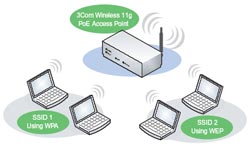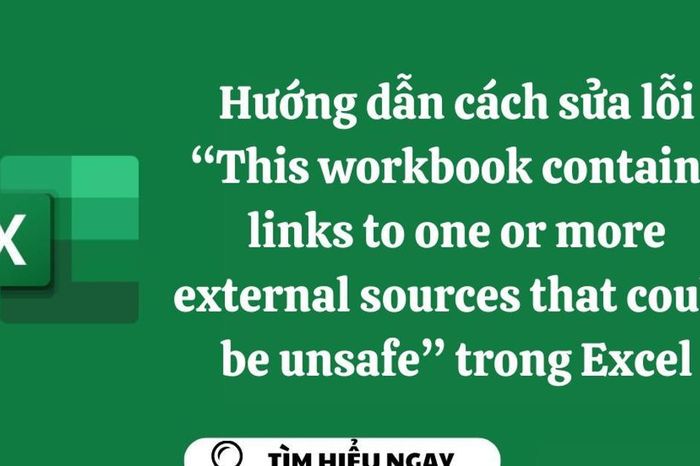SSID cloaking - safe or unsafe?
Many organizations use SSID cloaking as a mechanism to add security layer to WLAN. This technique requires all users to have knowledge of the SSID to connect to the wireless network. Typically SSID is considered to enhance WLAN security, and is the best practice recommended by PCI Data Security Standard. However, it also significantly reduces the security effectiveness of wireless LANs (WLANs).
Giving a false sense of security
Previous wireless networks deployed SSID cloaking as a means to prevent unidentified users from accessing the network. However, this technique has never been used as an authentication mechanism. Some organizations accept distribution of cryptic SSIDs in a shared secret style. Some tools such as ESSID-Jack or Kismel are responsible for monitoring and reporting the situation of SSIDs on legitimate stations, thus leaving traces to allow an attacker to see the origin of SSID and easily circling security mechanisms to penetrate the network.
 Confusing users
Confusing users
When the network SSID is masked, users cannot refer to the list of suitable wireless networks for WLAN. From there make them choose and log in to another network and leave vulnerabilities on the client side. Some US states consider this as an illegal computer intrusion.
Attempts to impersonate AP
Some attack tools like KARMA take advantage of advanced WLAN exploration techniques used by wireless clients. When a station probes for WLAN in the priority list (PNL), the station itself will trace the SSID to the listening attacker. KARMA-style attacks use the SSID detected to impersonate WLAN as a lure to manipulate the operational station to the attacker. For Windows XP SP2 users who have updated the hotfixes on Microsoft's KB917021 page, Windows workstations change the operating method when exploring wireless networks. Users and administrators can bookmark categories on PNL as 'nonbroadcast' (without promotion). When the 'Connect even if this network not broadcasting' option is not selected, the workstation will not reveal SSID information despite network exploration, limiting the KARMAL attack type. However, for the workstation to identify the appropriate network, the AP must disable the SSID mask function. Otherwise, they will return to active network exploration, making SSID cloaking a less secure option.
Although SSID cloaking appears to be a very attractive mechanism to support WLAN security, it really reduces the security of corporate wireless wireless networks.
You should read it
- Instructions for changing settings in Wi-Fi Router
- How to Find the SSID on a Computer
- Wireless traffic security - Part 3
- What is SSID? How to turn off, turn on, change SSID in Wifi network for better security
- How to turn off the router's SSID for better security
- Wi-Fi security with advanced techniques
- Upgrade wireless network security
- Wireless network traffic security - Part 5
May be interested
- 5 ways to identify safety extension before installation
 currently, there are thousands, millions of extensions and a wide variety of genres in browsers. therefore, you need to know how to anticipate unsafe extensions, avoid false false settings, contain malicious code, malware, data collection, ...
currently, there are thousands, millions of extensions and a wide variety of genres in browsers. therefore, you need to know how to anticipate unsafe extensions, avoid false false settings, contain malicious code, malware, data collection, ... - Instructions on how to fix 'This workbook contains links to one or more external sources that could be unsafe' error in Excel
 when working with excel, you will easily encounter the error 'this workbook contains links to one or more external sources that may be unsafe' due to taking from many data sources. so how can i turn off the update link notification panel and still keep my excel file safe? let's find out in this article.
when working with excel, you will easily encounter the error 'this workbook contains links to one or more external sources that may be unsafe' due to taking from many data sources. so how can i turn off the update link notification panel and still keep my excel file safe? let's find out in this article. - Google wants to block unsafe, potentially risky download files on Chrome
 security engineer of google chrome team emily clark recently proposed adding automatic features to prevent high-risk download operations, coming from sites that are not secured in future versions. of the world's most commonly used browser platform.
security engineer of google chrome team emily clark recently proposed adding automatic features to prevent high-risk download operations, coming from sites that are not secured in future versions. of the world's most commonly used browser platform. - BKAV confirms that Face ID on iPhone X is not safe enough, with video proof
 recently, the vice president of information security at bkav had an unexpected performance when he surpassed the face id security method that was supposed to be apple's breakthrough on this new iphone x.
recently, the vice president of information security at bkav had an unexpected performance when he surpassed the face id security method that was supposed to be apple's breakthrough on this new iphone x. - Firefox is about to mark all HTTP pages as unsafe
 when the number of websites switches to https a lot, browsers will soon mark every http page as 'not secure' by default.
when the number of websites switches to https a lot, browsers will soon mark every http page as 'not secure' by default. - All problems with starting Windows in Safe Mode
 safe mode is a mode that helps windows to boot with minimal devices and services so that it can diagnose what is wrong with windows and fix the error.
safe mode is a mode that helps windows to boot with minimal devices and services so that it can diagnose what is wrong with windows and fix the error. - How to hide hidden WiFi network SSID on Windows 10
 hidden ssisd is a wifi security feature called wifi hidden, which helps you protect wifi to avoid unauthorized access to wifi network. so how to detect the hidden wifi connection network on windows 10?
hidden ssisd is a wifi security feature called wifi hidden, which helps you protect wifi to avoid unauthorized access to wifi network. so how to detect the hidden wifi connection network on windows 10? - How to use the Safe Boot option of Mac
 apple has provided the safe boot option (sometimes called safe mode) since jaguar (os x 10.2.x). safe boot may be the main troubleshooting step when you encounter problems with your mac.
apple has provided the safe boot option (sometimes called safe mode) since jaguar (os x 10.2.x). safe boot may be the main troubleshooting step when you encounter problems with your mac. - Instructions for changing settings in Wi-Fi Router
 whether you have a wireless router or multiple access points (aps), there are a number of settings and features that you can use to improve your wi-fi network. and many of them help increase performance and security.
whether you have a wireless router or multiple access points (aps), there are a number of settings and features that you can use to improve your wi-fi network. and many of them help increase performance and security. - How to turn on Safe Mode on Android
 if in the process of use, users discover that your device running android (smartphone or tablet) is frequently stalled, sluggish or battery problems cause the battery to run out quickly ... users can access go to safe mode to check if the above problems still happen?
if in the process of use, users discover that your device running android (smartphone or tablet) is frequently stalled, sluggish or battery problems cause the battery to run out quickly ... users can access go to safe mode to check if the above problems still happen?










 Create a home page on the desktop
Create a home page on the desktop Sexy machines
Sexy machines 9 things to note about memory cards
9 things to note about memory cards TCP and IP options
TCP and IP options Part II: Troubleshooting
Part II: Troubleshooting Why the computer is slow?
Why the computer is slow?